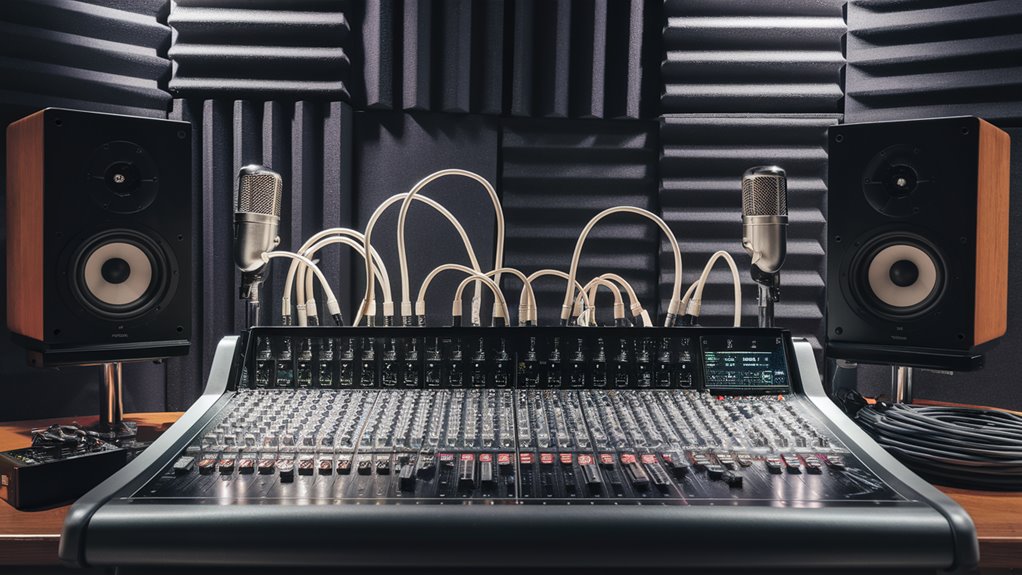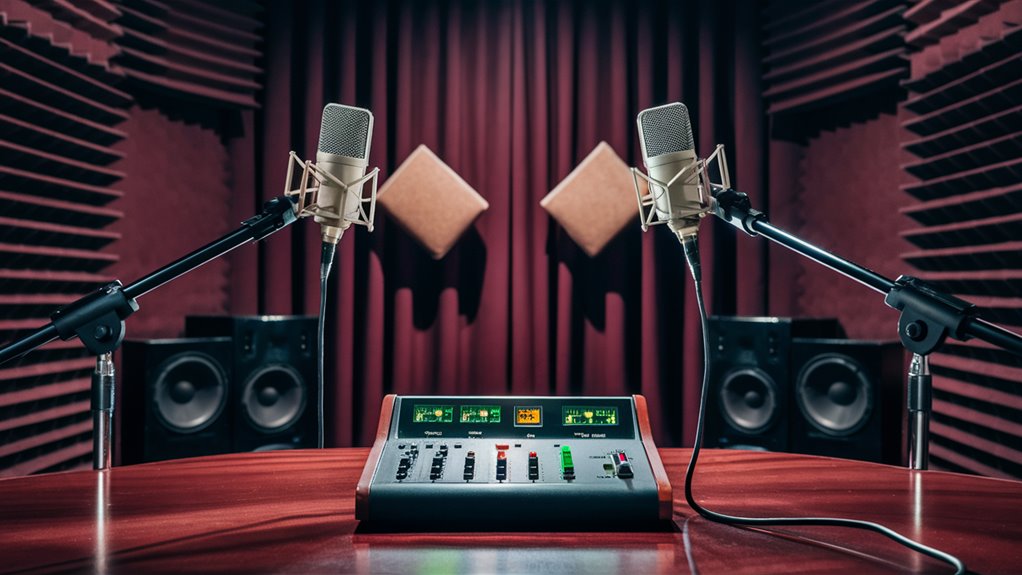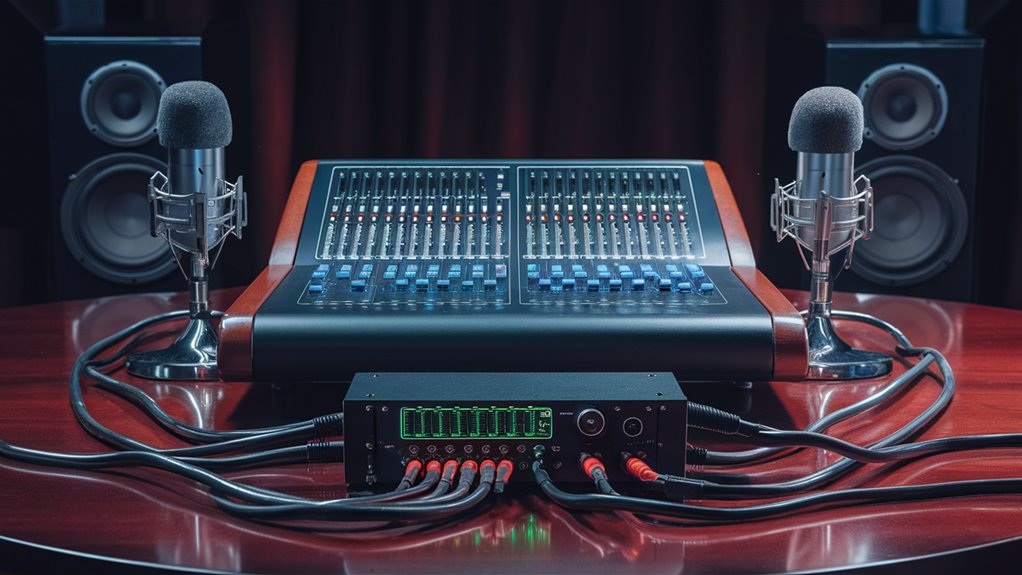
Top Tips for Great Karaoke Sound

Set Up Your Gear Well
Top sound gear gives great karaoke. Use a pro 8+ channel mixer with cardioid mics that pick up sound from 80Hz to 15kHz. Powered speakers need at least 300W RMS to spread sound right.
Fix EQ and Sound
Make your sounds clear for good singing:
- Boost 2-4kHz for clear voice sound
- The 5-7kHz range helps with high sounds
- Lower under 100Hz to cut strong bass
- Use compression in the 2:1 to 4:1 range
- Keep levels low, from -12dB to -18dB
Improve Room Sound
Placing speakers changes how sound feels:
- Set speakers at ear height https://getwakefield.com/
- Angle them 45 degrees toward you
- Place panels on 15-20% of walls
- Stop echoes from messing up sound
Keep Signals Clear
Make sure your sound path is clear:
- Use good cables
- Get the gain right
- Watch and fix loud, harsh sounds
- Ensure well-matched connections
Must-Have Karaoke Gear Guide
Parts for the Best Karaoke Show
The best karaoke setup needs four key parts working together: a sound source, an audio mixer, powered speakers, and pro mics. This guide shows the best setup for each.
What Your Sound Source Needs
Your core karaoke sound should be clear and separate. A pro karaoke machine or special software should handle both MP3+G and CD+G formats well.
How to Set Your Mixer
A top-end 8-channel mixer with built-in effects runs your show. Important parts are:
- Multiple inputs for songs
- Designated spots for mics
- Additional input options
- Manage gains, keeping them -12dB to -6dB down
What Your Speakers Should Do
Quality powered speakers should follow these guidelines:
- At least 300 watts RMS per channel
- 12-inch woofer for full bass
- Position them at ear level
- Angle them 45 degrees to fill the room
Setting Up Your Mics
Cardioid mics are best for singing:
- Range: 80Hz-15kHz
- Solid XLR connections
- Have extra mics ready
- Enough power for different mics
Best EQ for Clear Voices in Karaoke

Important EQ Sound Changes
To get good singing sounds in karaoke, adjust your equalizer in key areas. The goal is to lift tones to enhance voice while keeping sound steady.
Focus on Mid Tones
Target the 2kHz to 4kHz region with a slight boost of +2 to +3dB for voice clarity. Reduce below 100Hz to avoid low sound mess and keep voices clear. For better voice tones, raise the 5kHz-7kHz range a bit, but not more than +2dB to avoid harsh ‘s’ sounds.
Make Room in the Mix
Fill voice via wise use of the 250Hz-500Hz sound block. Make small -2dB cuts in the 300Hz-800Hz region to make space for clear voices. When mixing with other tracks, reduce the 1kHz-2kHz range to prevent clashing. Move slowly, as tiny adjustments can alter voice quality greatly.
Pro Sound Squeeze for Karaoke
Start of Dynamic Squeeze
Dynamic squeezing nails the top karaoke sound, managing loud and soft voice parts while keeping output even. Set your compressor’s threshold between -12dB and -18dB to capture voice highs without loss. Use a squeeze ratio between 2:1 and 4:1 for a real feel that suits the ear.
Time Your Settings Right
Attack and release times shape how singing feels. Set attack times between 10-20ms to keep the start of words clear while holding notes. Use release times of 50-100ms for even sound and to prevent jumps. For settings, use a two-stage squeeze setup: main compression (-20dB, 2:1 ratio) followed by final limit (-6dB, 8:1 ratio).
Stop Feedback and Echo
Feedback and echo often start when mics are too close to speakers or turned wrong. Keep mics at least 3 feet from speakers and angle them 45 degrees from reflective surfaces. Cardioid and supercardioid mics fight feedback better than omnidirectional mics.
Room Sound and Speaker Placement Guide
Best Speaker Placements for Good Sound
Smart speaker positions start great sound. Place main speakers at ear level, turned 45 degrees to where most listen, and space them evenly from side walls to avoid early echoes. For a top stereo feel, position speakers 75-80% of the distance from your spot to the speaker line. Best Karaoke Rooms for Hosting Weddings and Private Gatherings
Major Fixes for Room Sound
Ceiling strategy needs careful thought – put diffusers not absorbers if the ceiling is over 8 feet to keep natural room tone while managing bouncing echo. For floors, place thick rugs on 60% of hard floors to tame mid-high sound leaps without making the space too damp. This careful approach ensures top room sound while keeping natural sound characteristics.